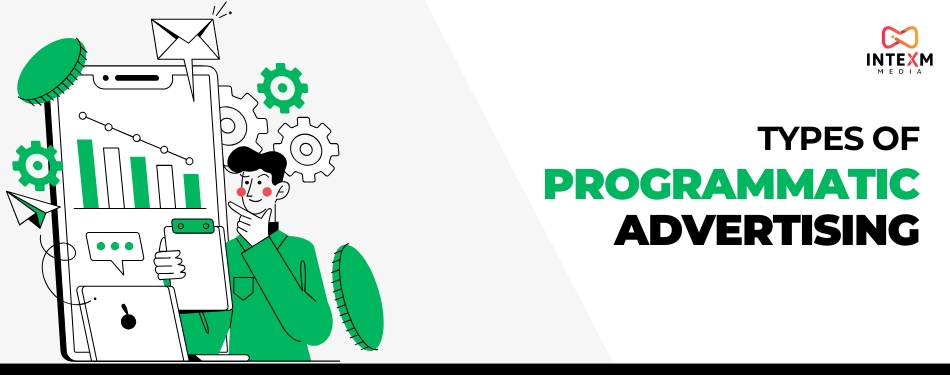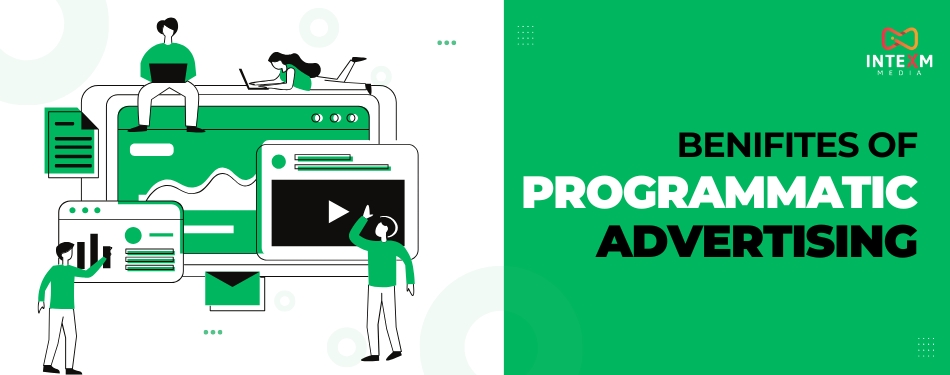
- 07 Mar, 2025by Mark
- Technology
- #Programmatic ad, #Programmatic advertising, #Media buying, #Programmatic,
4 Programmatic Ad Types and How to Utilise Them For Optimum Results
4 Programmatic Ad Types and How to Utilise Them For Optimum Results
Programmatic Ad has been in the limelight for a very long time. But do you know what exactly it means? Let’s get to know what programmatic advertising is and how it makes a difference in the industry.
Using automated technologies for media purchasing instead of more conventional digital advertising techniques is known as programmatic advertising. To deliver advertisements to the right audience at the correct time and at the appropriate cost, programmatic media purchasing makes use of algorithms and data insights.
What is the significance of programmatic media buying?
The conventional media purchasing method is labour-intensive and slow paced since it usually entails many requests for proposals, human arguments, and manual order placement. Ads are often bought in bulk, and advertisers have limited control over placement and inventory. And to cope up with that programmatic media buying comes into the picture.
What is the process for programmatic advertising?
The website or app publisher, which is the supply side, and the advertiser, which is the demand side, handle transactions using an auction mechanism called real-time bidding. A software interface, such as DSP, is used by the advertiser to define criteria for purchasing advertising. Places for advertising are put up for real-time bidding when a publisher's software (SSP), alerts the system to the availability of ad inventory.
By use of automated procedures, marketers place bids for the impression, which is a single individual view of an advertisement, depending on predetermined criteria and the impression's perceived worth. While the requested homepage loads, all of these procedures and the ad placement take place. Between the user's request for a webpage and the browser's loading time, the complete process occurs.
Different types of programmatic advertising
- Real-time bidding: Real-time bidding (RTB) is a programmatic approach to advertising. Advertisers may bid on an impression as soon as it becomes available with RTB. Their advertisement appears immediately on the publisher's website if their bid wins the auction. Apart from its efficiency, RTB aids marketers in concentrating on the most appropriate inventory.
- Private Marketplace: Another way to purchase media is through the private marketplace, or PMP. The primary distinction between PMP and RTB, while both being real-time bidding environments, is that PMP is not an open auction; instead, publishers invite advertisers to enter the private marketplace.
- Programmatic guaranteed: In contrast to RTB and PMPs, programmatic guaranteed, as the name implies, ensures that a specific bidder will have access to the inventory. The conventional method of purchasing media is most similar to this kind of programmatic advertising since both parties must bargain over rates and other relevant parameters. Though it does not completely replace human procedures like swapping ad tags, resolving conflicts, issuing insertion orders, managing payment, and so on, it is still done inside the programmatic ecosystem.
- Preferred deals: Preferred deals include you and the buyer negotiating conditions and a price for inventory that the buyer may choose to purchase. When the inventory is brought up for auction, the buyer receives the first, or "preferred," chance to bid at the agreed upon price. However, because the negotiated inventory isn't held for the buyer, preferred offers aren't guaranteed. Instead, you can choose to reserve it in a guaranteed campaign for a greater price, and purchasers aren't obligated to purchase the inventory.
Different Formats for Programmatic Advertising
Marketing teams can use a variety of programmatic advertising techniques across a wide range of advertising media. Based on data about the target market, advertisers choose the best medium for the campaign. The following are instances of programmatic advertising:
Audio Ads: An audio advertisement just uses sound to market to listeners, such as music and speech. These advertisements show up in media that concentrate on audio platforms, such news websites, music streaming services, and podcasts. Videos and display media can be accompanied by some audio advertisements.
Digital Out-of-Home Ads: Ads that you see in public spaces are known as digital out-of-home advertisements. Billboards, public transportation, airport screens, movie theatres, and sports stadiums are common locations for advertisers to display their commercials.
Display Ads: In order to convey information and spark interest in a product, display ads employ pictures and graphics. The header, sidebar, and footer of web pages as well as search engine results frequently contain these advertisements. Additionally, websites can present display adverts as pop-ups and overlays.
Native Ads: Native advertising is made by advertisers utilising the form and style of the content. Programmatic advertising marketers employ the following kinds of native ads:
- Rewarded video ads
- Promoted listings
- In-feed units
- In-article ads
- Recommendation widgets
- Sponsored content
Social Media Ads: These advertisements employ the same format as the material on user profiles on social networking platforms. In order to determine which advertisements in their feed could be most successful, programmatic social media advertisers take into account people and their interests. Additionally, marketers may manage influencer marketing programs and choose influencers via programmatic advertising.
Video Ads: A video advertising conveys information about a product or service via both sound and graphics. They frequently show up in locations where people watch video material.

Programmatic Advertising's Advantages
- Adaptable and Scalable Spending: Since programmatic advertisements are fully scalable according to the amount spent on ad campaigns, they are a suitable advertising medium for both large and small enterprises.
- Wide-ranging Reach: With millions of websites and a huge amount of ad space available, the publisher marketplace is significantly larger than anything else, giving marketers a huge reach with programmatic advertising.
- Transparency: With programmatic advertising, marketers can see every aspect of their campaigns with a degree of transparency that was never possible before. This degree of openness is revolutionary as it enables marketers to carefully monitor and assess each facet of their advertising campaigns.
- Effectiveness: The efficiency that programmatic advertising can provide is largely dependent on its transparency. Real-time access to this data enables advertisers to optimise the positioning and design of digital advertisements to maximise conversions and make adjustments as needed. Programmatic advertising's data-driven methodology makes it an effective advertising tool.
- Targeting: Programmatic advertising's particularity, as mentioned, enables a level of targeting that no other contemporary marketing strategy can match. Programmatic advertising can be categorised and targeted based on a number of characteristics that are relevant to the marketer's needs.
- Data in Real Time: Real-time data analysis and application are the foundation of programmatic advertising, which gives marketers access to this data instantly. They are able to make judgements quickly as a result, modifying campaigns as needed and assessing them as they are introduced.
Conclusion
Programmatic advertising is becoming more and more popular as marketers continue to proceed with their campaigns in a more data-driven manner. Businesses of all sizes are pursuing the advantages of programmatic advertising.
Because it can effectively target specific demographics and manage campaigns within a budget, this tool will be a crucial ally for marketers for many years to come.
...